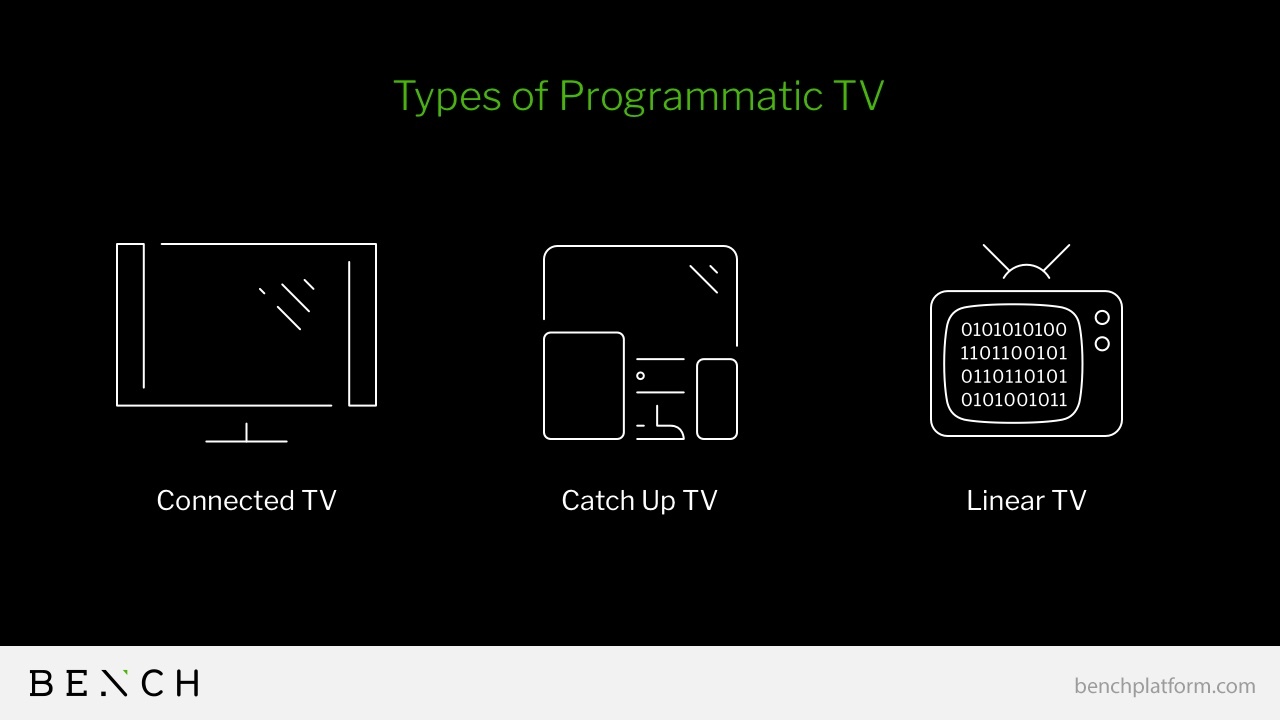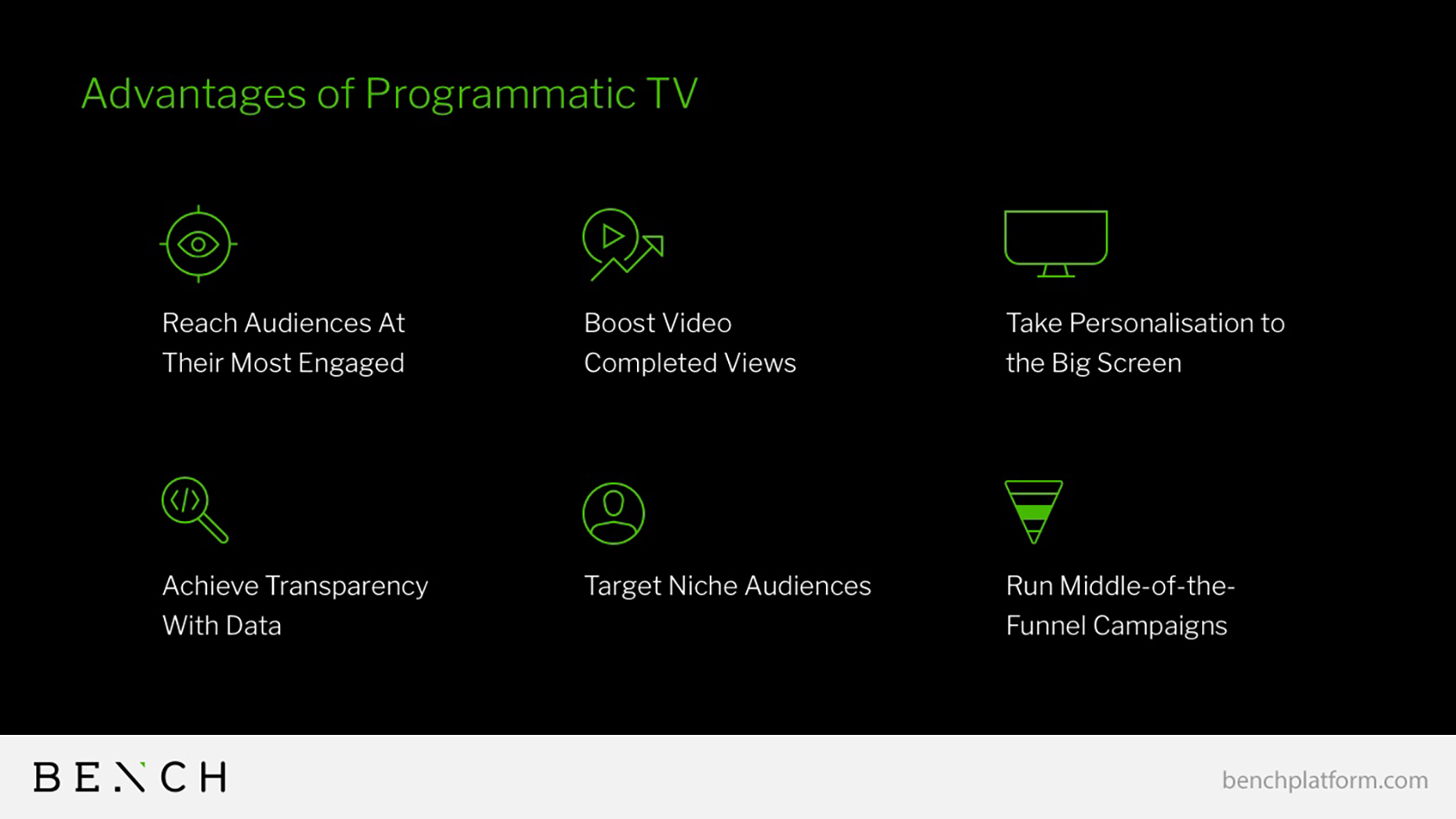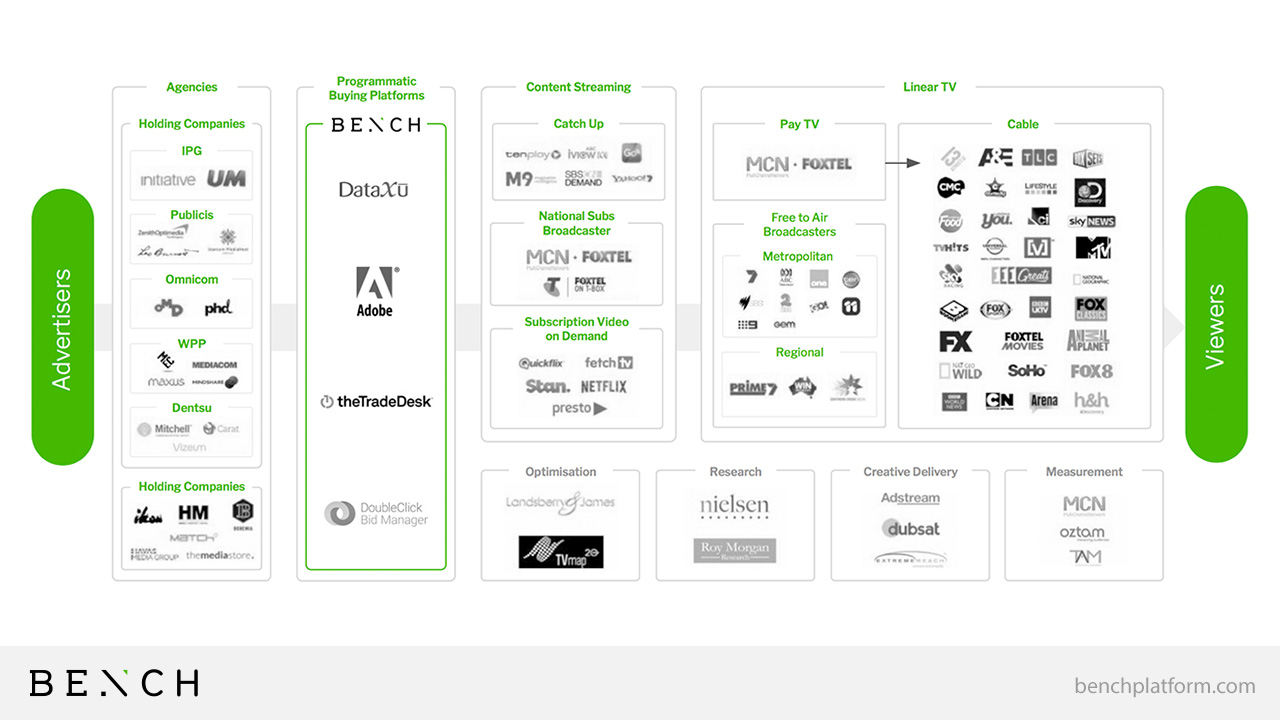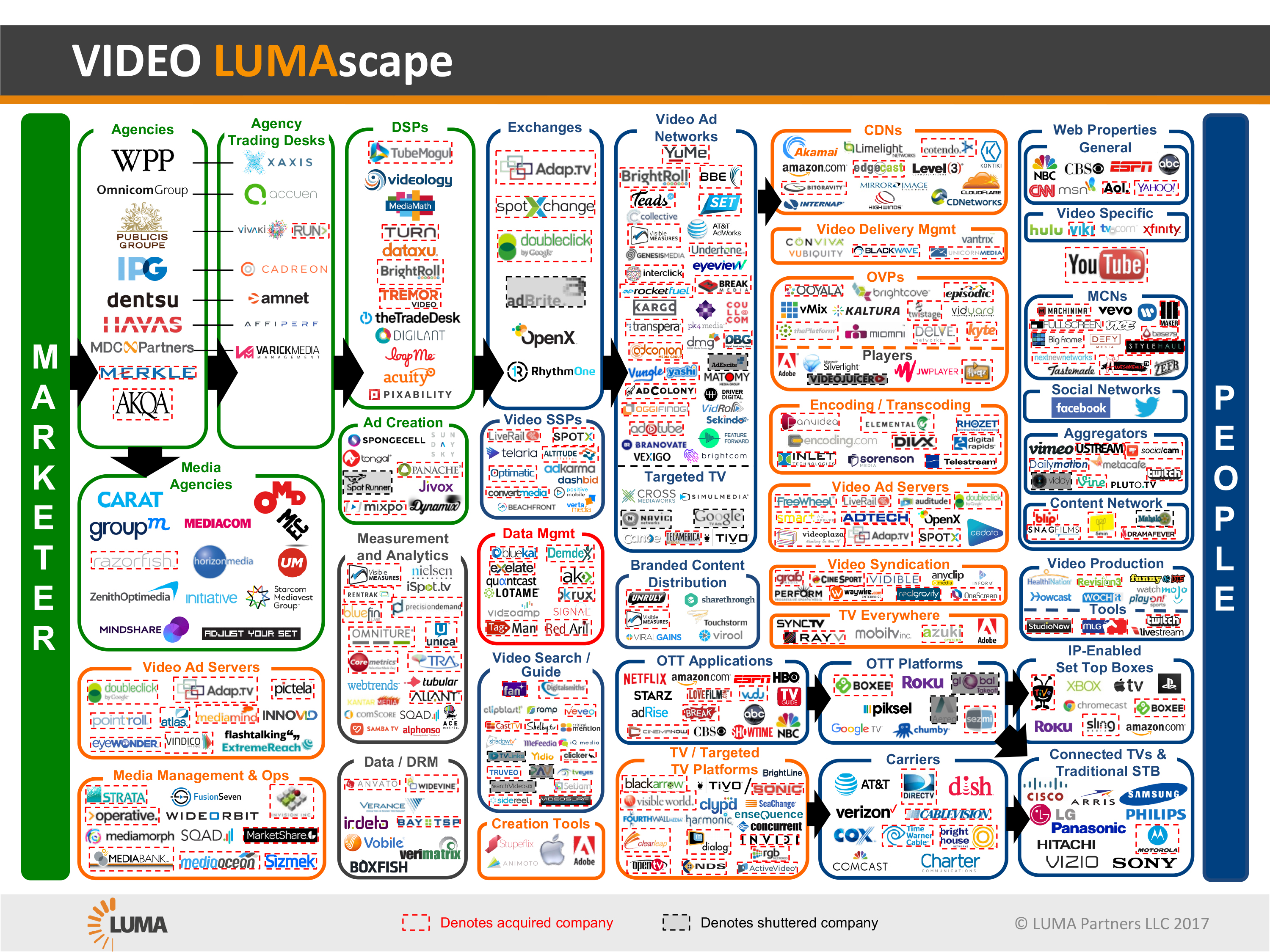
<link rel="canonical" href="https://benchplatform.com/programmatic-tv-australia/" />
Like every new channel that gets the programmatic treatment, connected TV is being touted as the new, new holy grail that will transform marketers’ digital campaigns into flowing rivers of conversion gold.
The same promises have so far been made for everything else: from display, to native, audio and every other imaginable channel in-between.
Ok, well maybe not display…
But Can You Believe the Hype this Time?
With programmatic TV (PTV) buying, the hype Kool Aid may actually be drinkable for the reasons that we’ll outline further. A research report produced by IAB found that in Australia, 82% of consumers watch digital video each month and the video market is experiencing 58% year-on-year growth.
Another piece of research carried out by Hulu in 2017 about the video consumption habits of Gen Z found that for them “it’s all just ‘watching TV'” – without regard to the delivery method.
Given this current consumer sensibility and the impressive growth of the PTV channel both locally and globally, it’s definitely worth a closer investigation.
This is the first time in history when marketers can gain all of the benefits provided by traditional TV advertising coupled with the advanced targeting and detailed reporting they’ve come to expect from digital media buying.
But first let’s start with a programmatic tv definition to ensure there’s no confusion.
Programmatic TV – A Much-Needed Disambiguation
As with every programmatic channel that emerges suddenly, the terms being bandied about can get very technical and very confusing, very fast.
So, what is programmatic TV?
Well, At a basic level, PTV television buying refers to the automated purchasing of audience-based advertising through a DSP or an omni-channel marketing platform.
But what’s all this OTHER stuff then:
Connected TV, addressable TV, targetable TV, over-the-top TV, smart TV, catch-up TV, VOD television?
No doubt, TV-land has seen simpler times but, fear not, most of these terms are not as confusing as they seem:
- Connected TV (aka addressable, targetable & over-the-top)
This includes content delivered via a digital TV set or an over-the-top box e.g. Smart TVs, Roku, Apple TV, Chromecast, Xbox, PlayStation, etc. Think of it as having the same digital ad capabilities, just with a larger display size to show it on.
- Catch Up TV
A type of video-on-demand (VOD) that involves recording your TV programming for later playback e.g. Freeview, SBS On Demand, TenPlay, Plus7 and 9Now. The targeting capabilities and ad formats here are different both from connected and linear television.
- Linear TV
This refers to TV in its traditional sense where all programming is scheduled in advance with the main difference being that ads can be bought using advanced audience data and in a programmatic fashion.
Now that we’re clearer on the terminology, let’s see what actually makes programmatic TV different from the other media opportunities on offer.
In a Saturated Programmatic World, Why PTV?
At Bench, we’re big advocates of taking an omni-channel approach to advertising and not relying on any one publishing platform or medium to sustain your marketing strategy.
It’s about diversifying channels in order to enhance your overall advertising results and PTV presents a great opportunity to do just that.
Addressable TV can help to round out your strategy in the following ways:
- Reach Audiences At Their Most Engaged, With Full Opt-In
Does having the highest video completion rates of any device sound interesting? A TV screen is still the most captivating in terms of audience viewability and there is full opt-in from the viewer.
- Boost Video Completed Views
Video completion rates are higher than they are on both mobile and desktop.
- Take Personalisation to the Big Screen
Personalise your ads, same as you would with a digital video ad. Except, this time, these same ads get the living room prime time!
- Achieve Transparency With Data
Forget third-party measurement. All of the analytics benefits of programmatic data can now be applied to TV advertising.
- Target Niche Audiences
Unleash the power of your DMP and CRM in order to run hyper-targeted TV campaigns based on existing audience data.
- Run Middle-of-the- Funnel Campaigns
Programmatic TV finally gives you the ability to move beyond awareness and engage your prospects further down the funnel on the biggest screen there is. This opens up a whole new world of marketing possibilities.
A Media Channel Still Waiting To Reach Marketing Puberty
The advent of any new media channel involves a significant fragmentation of the landscape in terms of the technology solutions that enable it. Programmatic TV advertising is no different.
There are are many emerging programmatic TV companies and startups that facilitate the ad buying process. The size of the Australian programmatic TV Mediascape visually shows how nascent the channel still is:
Comparing this to the now several-year-old video Lumascape shows just how much room for growth exists:
The Australian State-of-Play
In Australia specifically, the major TV networks and publishers are still trying to figure out how to best capitalise on the programmatic opportunity. As a result, the advertiser solutions are only starting to mature.
However, the IAB’s white paper points out that Connected TV already represents 35% of broadcasters’ online video inventory.
When it comes to the adoption of digital advertising channels, Australian marketers lead the pack globally. So, there’s no reason to think that PTV will be any different in terms of being rather quickly integrated into local brands’ media mixes.
(If you want to learn more about running programmatic TV campaigns in the Australian context, join us in our upcoming webinar.)




